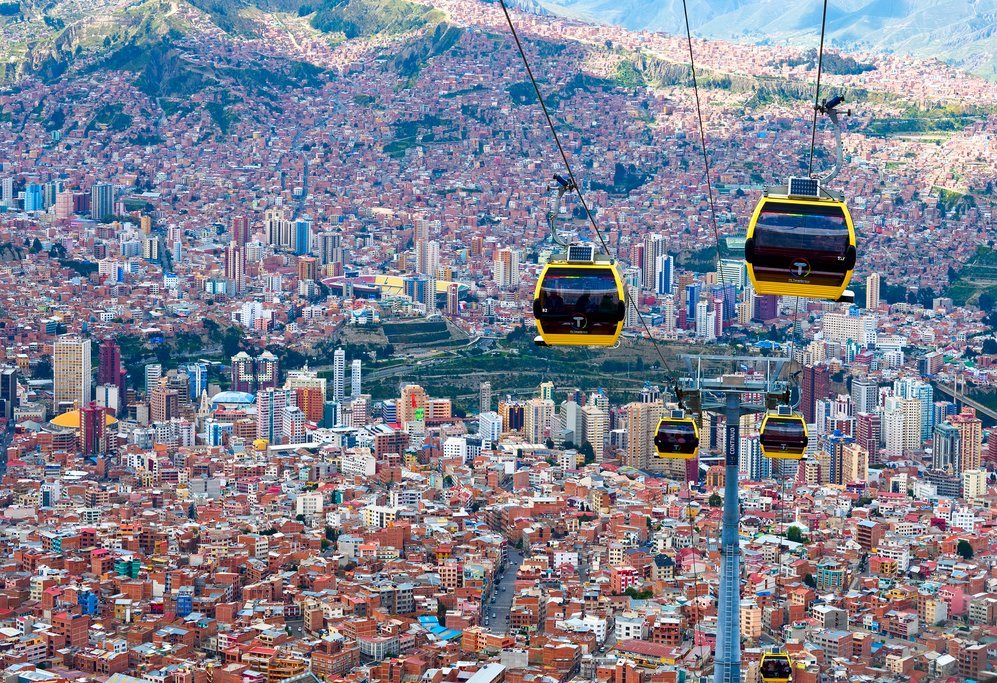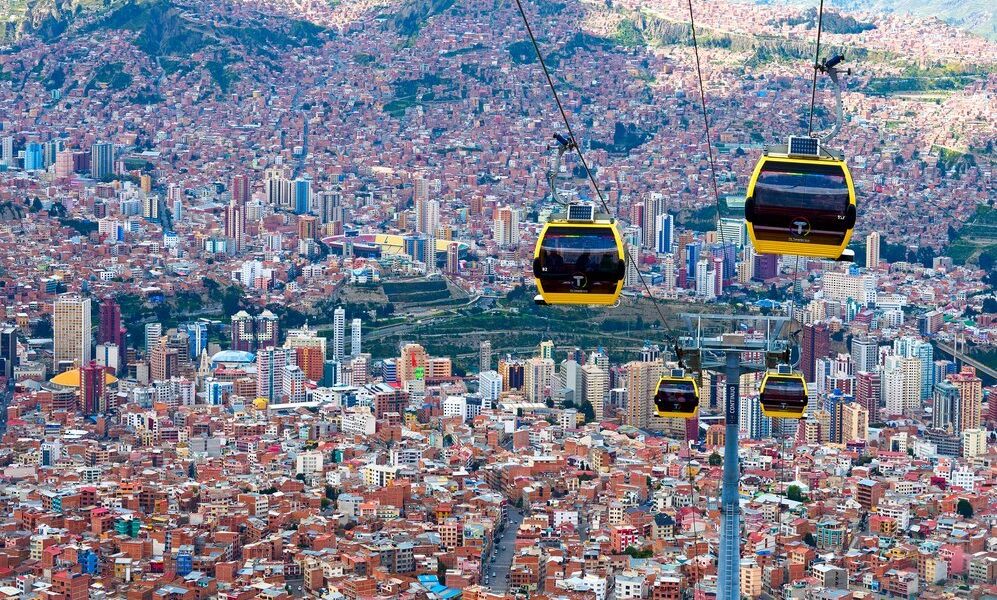
The rainfall slackens off slightly in February compared to the last couple of months, but this remains a decidedly drippy time of year in the majority of the country. Temperatures are almost at their annual peaks in the rainforest and much of the savanna, while the Andes are decidedly chilly. However, one big party this month brightens things up, and that’s Carnival. There are some genuinely spectacular celebrations across Bolivia for this at the end of the month.
## Weather in Bolivia: A February Forecast
Bolivia, a captivating jewel nestled in the heart of South America, boasts a diverse tapestry of landscapes and climates. Similar to many of its neighboring countries, Bolivia is geographically segmented, with each zone experiencing its own unique weather patterns. Imagine the towering, snow-capped Andes Mountains in the west, their climate echoing that of the Peruvian Andes. Then picture the steamy, verdant rainforests of the north, teeming with life and humidity. Finally, envision the expansive savanna region in the south and east, largely dominated by the Gran Chaco, a semi-arid expanse sparsely dotted with trees. Understanding this geographical diversity is key to planning your February adventure in Bolivia.
### The Mighty Andes in February
The bustling city of **La Paz** serves as a good representation of the climate experienced in the Andean region as a whole. February sees minimum temperatures reach their highest point of the year in La Paz. However, while it doesn’t reach frigid levels, warmth is also somewhat elusive. Expect temperatures to peak around 37°F (13°C), a temperature that unfortunately persists for a significant portion of the year. In fact, February is the second-wettest month in La Paz, closely following January, and receives the least amount of sunshine on average, with a mere five hours of daylight. This often creates a chillier ambiance than the temperature would suggest. If you venture further into the Andes, you’ll discover that the breathtaking **Lake Titicaca** and the mesmerizing **Salar de Uyuni** tend to be slightly warmer than La Paz, on average, during this period. Pack layers and be prepared for varying conditions as you explore the heights of Bolivia!
### Rainforest Rains in February
Journey north to **Cobija**, a city nestled near the Brazilian border, and you’ll find yourself in the heart of the rainforest region. Here, February continues the trend of incredibly wet weather. Rainfall averages around 9.8 inches (25 cm), a slight decrease from January, making it the second wettest month of the year. This heavy precipitation can render large swathes of the rainforest difficult, if not impossible, to navigate, except by boat. Despite the rain, February offers warm temperatures, ranging from 70°F to 88°F (21°C to 31°C), striking a balance between not too cold and not too hot. Be prepared for humidity and embrace the opportunity to witness the rainforest in its full, vibrant, and watery glory.
### Savanna Sunshine in February
Moving towards the savanna region, **Santa Cruz** provides a representative snapshot of the climate. February boasts some of the hottest temperatures in this expansive area, surpassed only by November and December, with averages ranging from 70°F to 86°F (21°C to 30°C). While still considered a relatively wet time of year, February sees a welcome decrease in precipitation compared to the previous two months. Adding to the appeal, sunshine graces the landscape for an average of seven hours per day, offering ample opportunities to explore between refreshing showers. Be sure to pack light, breathable clothing and embrace the warmth and sunshine that the Bolivian savanna has to offer.
## Crowds and Costs: Navigating Bolivia in February
February falls squarely within the low season for tourism in Bolivia. The persistent wet weather tends to deter many international travelers, rendering certain destinations inaccessible or making travel slow and challenging due to muddy conditions. This period presents a unique opportunity to inquire about potential discounts on hotels and tours, as businesses seek to attract visitors. However, it’s important to note that Bolivia already boasts remarkably affordable prices compared to many other countries, making it a budget-friendly destination even during peak season.
Towards the end of February, a surge of visitors, predominantly Bolivians and travelers from neighboring South American countries, descends upon Bolivian towns and cities to partake in the vibrant Carnival celebrations. In particular, **Oruro** and **Santa Cruz** experience a dramatic influx of people, resulting in booked-up hotels and significantly increased accommodation prices. If you plan to visit these cities during Carnival, be sure to book your accommodations well in advance.
## Where to Go in Bolivia During February
Despite the challenges posed by the weather, February in Bolivia presents unique opportunities for exploration and adventure.
### Exploring the Andes in the Wet
If you choose to venture into the Andes this February, prepare for wet conditions. With an average of 3.9 inches (10 cm) of precipitation expected, selecting destinations with indoor activities is essential. The vibrant capital of **La Paz** offers a plethora of options. Delve into the thriving foodie scene, propelled onto the international stage by multi-Michelin Star winner Claus Meyer and the renowned high-end restaurant **Gustu**. Alternatively, immerse yourself in Bolivian cuisine by taking a cooking class. Explore captivating museums such as the **Ethnography Museum** or the **Plaza Museum of Contemporary Art**.
**Sucre**, another cosmopolitan gem nestled in the Bolivian Andes, boasts the historic **Casa de la Libertad**, where Bolivia’s Declaration of Independence was signed, as well as stunning colonial buildings where you can seek refuge from the rain. A visit to **Copacabana** on the shores of **Lake Titicaca** is highly recommended this month, where the Virgen de la Candelaria celebrations explode with color. **Oruro** transforms into a lively hub at the end of February for Carnaval. For adrenaline junkies, **Coroico**, situated between La Paz and the rainforest, offers thrilling white-water rafting experiences.
### Rainforest Adventures (with Caution)
Due to persistent flooding, access to much of the rainforest remains limited during February and extends into March. However, larger towns and cities like **Trinidad** are generally accessible, offering opportunities for boat trips on nearby rivers. Consider postponing your rainforest exploration until April through October, when wildlife sightings are more frequent, as animals tend to seek shelter during the rainy season.
### Savanna Celebrations and Serenity
Embark on your savanna journey in the vibrant city of **Santa Cruz**, where one of Bolivia’s and South America’s best Carnival celebrations unfolds. Immerse yourself in Bolivia’s rich cultural and religious heritage by visiting the historic Jesuit missions in the surrounding area. Additionally, indulge in Bolivia’s burgeoning wine scene, centered around the **Valle de la Concepción** near Tarija, where the annual grape harvest is just beginning at several wineries.
Venture into the nearby hills for exceptional off-the-beaten-path hiking trails, including a rarely traversed Inca Trail, and witness spectacular waterfalls in full spate at **Chorros de Jurina**.
## What to Do in Bolivia in February
### Immersing Yourself in the Andes
Plan to spend time in the larger towns and cities of the Andes during February, where the frequent rain will keep you indoors. Discover Bolivia’s evolving cuisine scene, now gaining international recognition because of the opening of tantalizing new restaurants in La Paz and other cities. Museums and art galleries in **La Paz** or **Sucre** present the history and culture of Bolivia. Visit the **Mercado de las Brujas** (Witches Market) in La Paz or **Mercado Campesino** in Sucre.
If you want to get out of the city, try white water rafting, kayaking, or tubing on the Río Coroico near Coroico, or go to the **Salar de Uyuni** which is like a dream at this time of year as the sky is reflected in the water covering the ground.
Then there is Bolivia’s coca crop, which has its first harvest after the first of the year’s heaviest rains have passed, and there are farms and communities in the Andes where you can meet the people who farm coca and learn about the plant.
### Rainforest River Journeys
If you do decide to visit the rainforest, a boat trip on an Amazonian river is worth considering. The **Río Beni** (from Rurrenabaque) or **Trinidad** offer this service.
Bolivia’s coca crop has its first harvest after the first of the year’s heaviest rains have passed, and there are farms and communities in the rainforest, as well as the Andes, where you can meet the people who farm coca and learn about the plant.
### Savanna Festivities
Spend some time in **Santa Cruz**, where you can enjoy one of the country’s best festivals at the city’s carnival this month. The sun will be making an appearance, so it’s worth heading out to **Tarija**, from where you can discover all about the Bolivian wine scene. Grape harvesting is just beginning in the nearby viticultural region of **Valle de la Concepción**.
## Events in February
**Virgen de la Candelaria, nationwide**. This, on February 2, is a festival with dances, parades, and street food. Copacabana, on **Lake Titicaca**, hosts big celebrations. Here, even the cars get blessed!
**Carnaval, Oruro and Santa Cruz**. This is celebrated in two Bolivian cities: **Oruro** and **Santa Cruz**.
B-186

